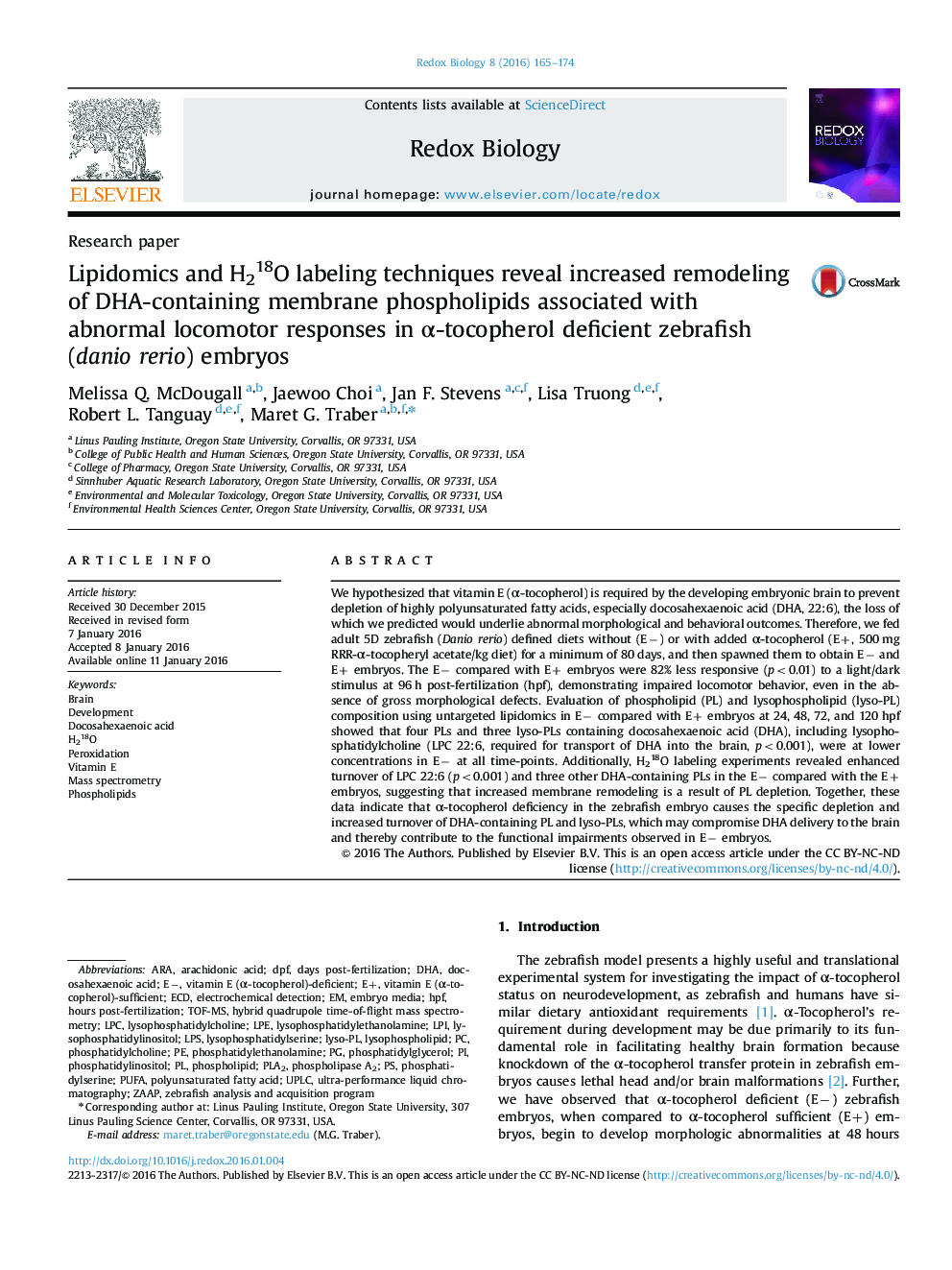| Article ID | Journal | Published Year | Pages | File Type |
|---|---|---|---|---|
| 1922862 | Redox Biology | 2016 | 10 Pages |
•α-Tocopherol deficient (E-) embryos are abnormal and have impaired locomotor responses.•DHA-containing phospholipids and lysophospholipids are depleted in E− embryos.•E- embryos have increased turnover of DHA-containing phospholipids and lysophospholipids.•DHA delivery to tissues is compromised, contributing to the functional impairments in E- embryos.
We hypothesized that vitamin E (α-tocopherol) is required by the developing embryonic brain to prevent depletion of highly polyunsaturated fatty acids, especially docosahexaenoic acid (DHA, 22:6), the loss of which we predicted would underlie abnormal morphological and behavioral outcomes. Therefore, we fed adult 5D zebrafish (Danio rerio) defined diets without (E−) or with added α-tocopherol (E+, 500 mg RRR-α-tocopheryl acetate/kg diet) for a minimum of 80 days, and then spawned them to obtain E− and E+ embryos. The E− compared with E+ embryos were 82% less responsive (p<0.01) to a light/dark stimulus at 96 h post-fertilization (hpf), demonstrating impaired locomotor behavior, even in the absence of gross morphological defects. Evaluation of phospholipid (PL) and lysophospholipid (lyso-PL) composition using untargeted lipidomics in E− compared with E+ embryos at 24, 48, 72, and 120 hpf showed that four PLs and three lyso-PLs containing docosahexaenoic acid (DHA), including lysophosphatidylcholine (LPC 22:6, required for transport of DHA into the brain, p<0.001), were at lower concentrations in E− at all time-points. Additionally, H218O labeling experiments revealed enhanced turnover of LPC 22:6 (p<0.001) and three other DHA-containing PLs in the E− compared with the E+ embryos, suggesting that increased membrane remodeling is a result of PL depletion. Together, these data indicate that α-tocopherol deficiency in the zebrafish embryo causes the specific depletion and increased turnover of DHA-containing PL and lyso-PLs, which may compromise DHA delivery to the brain and thereby contribute to the functional impairments observed in E− embryos.
Graphical abstractFigure optionsDownload full-size imageDownload as PowerPoint slide
